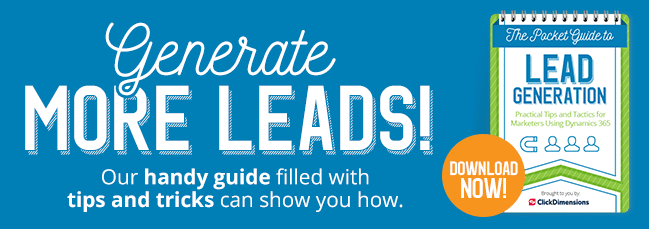Thank you to Hans Van de Velde, Marketing Manager at Net IT, for this guest post!
Marketing generates leads via different channels, but only a small percentage become new customers. Does this sound familiar? You might be dealing with a leaking sales funnel. Consequently, you’re losing a high percentage of sales opportunities and your marketing and sales organization wastes valuable time and resources.
The prospects in your sales funnel enter a number of steps leading to a closed deal. But inevitably some prospects simply leave the sales lead conversion process. The more complex your offering, and the bigger the investment cost, the more elaborate this conversion process will be. A splendid collaboration between marketing and sales is important to optimize the success ratio. Similar to a relay race, it’s crucial that no one drops the baton before reaching the finish line, and the most important step in a complex sales process is always the next step.
How to Discover Leaks in Your Sales Funnel
Discovering the leaks in your sales funnel is a challenge that takes a significant amount of effort, but it’s well worth it. Every leak that gets fixed leads to better sales results.
It’s important to know when and where things tend to go wrong. You can get this information out of your marketing and sales data. The base requirement is to track every lead throughout the entire sales process from first contact to a won quote or order in a CRM system, such as Microsoft Dynamics 365. As we will explain, this enables you to discover where in the process you are losing your grip on potential customers.
Leads generated via your digital marketing efforts can easily be tracked via marketing automation technology. ClickDimensions enables you to automatically inject your inbound marketing leads directly into your Dynamics 365 environment from which you can manage the lead nurturing process and eventually assign the lead to sales to reach out.
Now, let’s get down into the details of how to analyze your marketing and sales data in Microsoft Dynamics 365. Start by creating a marketing and sales dashboard with the following KPIs:
Using Lead Record Data
- Numbers generated per period (month, quarter, year) and compare the statistics with relevant previous periods to track how performance evolves.
- Per status: how many leads got qualified or disqualified and how many leads got neglected?
- Per channel and per source campaign: What is the volume of leads coming in? Compare conversion rates to evaluate the quality of leads per lead source.
Using Opportunity Record Data
- Numbers created per period (month, quarter, year) and compare the stats with relevant previous periods to track how performance evolves.
- Per status and per sales stage: how many opportunities are open and how many were lost? Visualize the number of lost opportunities per sales stage.
- Report on these numbers per channel and per source campaign.
Using Won Quote Record Data (or use Order/Invoice Data)
- Total generated revenue per month/quarter/year per channel and per source campaign.
- Compare generated revenue for existing vs. new customers.
Track and Analyze Lost Reasons of Your Opportunities
- What are the stated reasons that potential customers dropped out of your sales funnel? What is the reason according to your sales rep?
How to Prevent or Fix Lead Leakage
1. Attract the right customers. Are you losing prospects at the very beginning of your sales funnel? Then you should consider if you’re attracting the right kind of leads. Are these prospects right for your products or services?
To make sure your inbound marketing efforts are attracting the right people, analyze the “buyer personas” in your target groups and adjust your content marketing to their specific challenges. Also ensure you have relevant marketing content and sales tools for every step of the buyer journey.
2. Be quicker. According to InsideSales.com, in 35 to 50 percent of the cases, the deal goes to the supplier who answers first. Keep an eye on the hottest leads. Whenever a potential customer reaches out, you need to act quickly in order to increase your chances of success.
3. Tailor your best next conversation. To improve your sales effectiveness, it’s important to make a good assumption about where your prospect currently is in the sales process. For instance, it’s useless to send a quote if your prospect doesn’t have any plans to purchase in the near future and it would be even more of a misstep to bombard your prospect with product information if they have already completed the necessary homework.
An outlined sales methodology can help to correctly assess a potential customer and determine the next best step to make progress. Don’t forget to regularly brush up on the knowledge of the sales methodology in your sales team.
4. Analyze and improve the sales process. Look at your sales process with the mind of a business analyst. What’s the current business process flow? What’s going well and where is there room for improvement? Is there a clear goal every step of the way? How is the hand-off of leads going from marketing to sales?
Focus on the experience of your potential customer in every step. Wherever possible, improve your interactions with prospects. Support your redesigned sales process by making the necessary changes in your CRM tool. Get everybody on the same page by providing training to your marketing and sales staff.
5. Keep experimenting. Try new things, look at your sales and marketing dashboard and draw conclusions on what works and what doesn’t. Do more of what works, but don’t forget to experiment.







